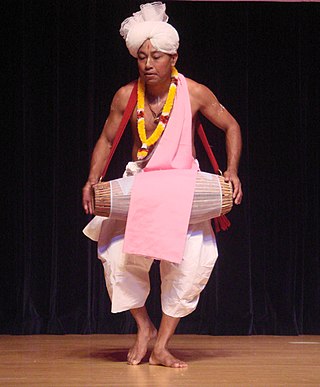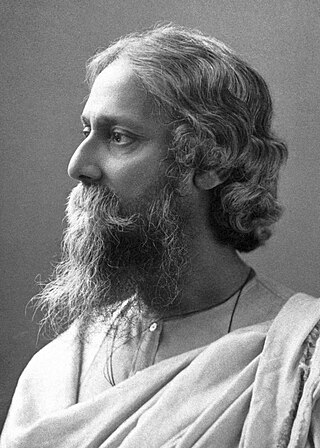
Tamil Nadu is the southern-most state of India. The tenth largest Indian state by area and the sixth largest by population, Tamil Nadu is the home of the Tamil people, whose Tamil language—one of the longest surviving classical languages in the world—is widely spoken in the state and serves as its official language. The capital and largest city is Chennai.

The Tamil people, also known as Tamilar, or simply Tamils, are a Dravidian ethno-linguistic group who trace their ancestry mainly to India’s southern state of Tamil Nadu, union territory of Puducherry and to Sri Lanka. People who speak Tamil and are born in Tamil clans are considered Tamils. Tamils constitute 5.9% of the population in India, 15% in Sri Lanka, 7% in Malaysia, and 5% in Singapore.

Adyar is a large neighbourhood in south Chennai, Tamil Nadu, India. It is located on the southern banks of the Adyar River. It is surrounded by the Tharamani in the West, Thiruvanmiyur to the South, Besant Nagar in the East, Kotturpuram in the North-West and Raja Annamalai puram in the North past the Adyar River. Adyar is one of the costliest areas in Chennai with property values four times the value of similar sized properties in the northern part of Chennai. The Gandhi Nagar region of Adyar is one of the poshest localities in Chennai.

Thanjavur, also Tanjore, is a city in the Indian state of Tamil Nadu. Thanjavur is the 11th biggest city in Tamil Nadu. Thanjavur is an important center of South Indian religion, art, and architecture. Most of the Great Living Chola Temples, which are UNESCO World Heritage Monuments, are located in and around Thanjavur. The foremost among these, the Brihadeeswara Temple, built by the Chola emperor Rajaraja I, is located in the centre of the city. Thanjavur is also home to Tanjore painting, a painting style unique to the region.

Nagapattinam is a town in the Indian state of Tamil Nadu and the administrative headquarters of Nagapattinam District. The town came to prominence during the period of Medieval Cholas and served as their important port for commerce and east-bound naval expeditions. The Chudamani Vihara in Nagapattinam constructed by the Srivijayan king Sri Mara Vijayattungavarman of the Sailendra dynasty with the help of Rajaraja Chola I was an important Buddhist structure in those times. Nagapattinam was settled by the Portuguese and, later, the Dutch under whom it served as the capital of Dutch Coromandel from 1660 to 1781. In November 1781, the town was conquered by the British East India Company. It served as the capital of Tanjore district from 1799 to 1845 under Madras Presidency of the British. It continued to be a part of Thanjavur district in Independent India. In 1991, it was made the headquarters of the newly created Nagapattinam District. Nagapattinam is administered by a Special grade municipality covering an area of 17.92 km2 (6.92 sq mi) and had a population of 102,905 as of 2011.

Chola Nadu is a cultural region of the Tamil Nadu state in southern India. It encompasses the lower reaches of the Kaveri River and its delta, and formed the cultural homeland and political base of the Chola Dynasty which ruled large parts of South India and parts of Sri Lanka between the 9th and 13th centuries CE. Uraiyur served as the early Chola capital, then medieval Cholas shifted to Thanjavur and later cholas king Rajendra Chola I moved the capital to Gangaikonda Cholapuram in Ariyalur in the 11th century CE.

The culture of Chennai, popularly called the "Gateway to the South India", is distinct from that of any other Indian city. Being a cosmopolitan hub, the city's culture reflects its diverse population that has resulted in a unique blend. Though a modern metropolis, Chennai continues to be traditional and conventional in certain ways. Traditional music, dance and all other art forms of Tamil Nadu are very popular in the city. One can find a peculiar cultural blend in city, from traditional foods to fast foods, from ancient temple architecture to modern high-rises, and from classical music and dance to the growing nightlife.

Tamil Nadu Police is the primary law enforcement agency of the state of Tamil Nadu, India. It is over 150 years old and is the fifth largest state police force in India. Tamil Nadu has a police-population ratio of 1:632. The Director General of the Tamil Nadu police is C. Sylendra Babu.
The administrative divisions of India are subnational administrative units of India; they are composed of a nested hierarchy of administrative divisions.

North Zone Cultural Centre or NZCC in Patiala in Punjab state was first amongst several regional cultural centres established by Government of India to preserve and promote arts, crafts, traditions and cultural heritage of India.

North East Zone Culture Centre in Chümoukedima in Nagaland state is one of many regional cultural centres established by the Indian Government to preserve and promote traditional cultural heritage of India. The North East Cultural Zone is one of seven Cultural Zones of India defined and provided with administrative infrastructure by the Government of India.
The West Zone Culture Centre in Udaipur, Rajasthan is one of seven Cultural Zones established by the Government of India to preserve and promote India's traditional cultural heritage. The centre works to retain and develop regional cultural resources, including traditional and tribal arts. It is provided with administrative infrastructure by the Government of India.

The Ministry of Culture is the Indian government ministry charged with preservation and promotion of art and culture of India.
History of Eastern Tamils of Sri Lanka is informed by local legends, native literature and other colonial documents. Sri Lankan Tamils are subdivided based on their cultural, dialects & other practices as into Northern, Eastern and Western groups. Eastern Tamils inhabit a region that is divided into Trincomalee District, Batticalo District and Ampara District.
The Cultural Zones of India are seven overlapping zones defined by the Ministry of Culture of the Government of India to promote and preserve the cultural heritage of various regions of India. Each of these zones has been provided with a zonal centre. Most zonal centres were announced by the then-Prime Minister of India, Rajiv Gandhi, in 1985 and formally began functioning in the 1986–87 period. Their stated goal is "to strengthen the ancient roots of Indian culture and evolve and enrich composite national culture".

Salem City Municipal Corporation (SCMC) is a civic body that governs Salem city, Tamil Nadu, India. It consists of a legislative and an executive body. The legislative body is headed by the city mayor while the executive body is headed by a Chief Commissioner. This corporation consists of 60 wards and is headed by a Mayor who presides over a Deputy Mayor and 60 councillors who represent each ward in the city. SCMC is the fifth largest municipal corporation in Tamil Nadu. For administrative purposes, the Salem corporation is divided into four zones: Suramangalam, Hasthampatty, Ammapettai, and Kondalampatty. Each Zonal Office has its own Zonal Chairman and an Asst. Commissioner to take care of Zonal Activities.

The East Zone Cultural Centre has its headquarters in Sector III, IB 201, IB Block, Salt Lake City, Kolkata, which is also known as the Cultural Capital of India and most commonly City of Joy is situated in the Indian state of West Bengal.It is one of the seven Zones established in India.The Indian states which are under the Eastern Cultural Zone are West Bengal, Jharkhand, Bihar, Odisha, Assam, Tripura, Manipur, Sikkim, Andaman & Nicobar Islands. This zone is home to three classical dance Odissi, Sattriya and Manipuri dance. Classical music Odissi music and semi-classical music Rabindra Sangeet. Odia is one of Classical language in India and only living classical language from Eastern India.

Tiruchirappalli railway division(Tamil: [ திருச்சிராப்பள்ளி ரயில் கோட்டம்]) is one of the six railway divisions of Southern Railway zone (SR) of India. It has its administrative headquarters located at Tiruchirappalli. It serves most of the districts of delta region and Central Tamil Nadu.

Dr. Gayatri Sankaran is an Indian Carnatic musician and vocalist specialising in Carnatic vocals and violin performances. She is a recipient of the Kalaimamani award from Tamil Nadu Eyal Isai Nataka Manram, a unit of the Directorate of Art and Culture, Government of Tamil Nadu. The Government of India honoured her in 2006 with the award of Padma Shri, the fourth highest Indian civilian award for his contributions to music, making her the first visually impaired woman to receive the award.
The South-Central Zone Cultural, Nagpur or SCZCC one of the seven Zonal Cultural Centres in India was established in 1986 with its headquarters at Nagpur. It comprises the linguistically different states of Andhra Pradesh, Karnataka, Madhya Pradesh, Telangana, Chhattisgarh, Goa and Maharashtra. Each of these States has rich traditions of folk, tribal, fine arts and crafts. The Centre strives through its various activities to enrich, promote and strengthen these traditions. The centre is working under the control of Ministry of Culture, Government of India. The Governor of Maharashtra is the chairman of this centre.














